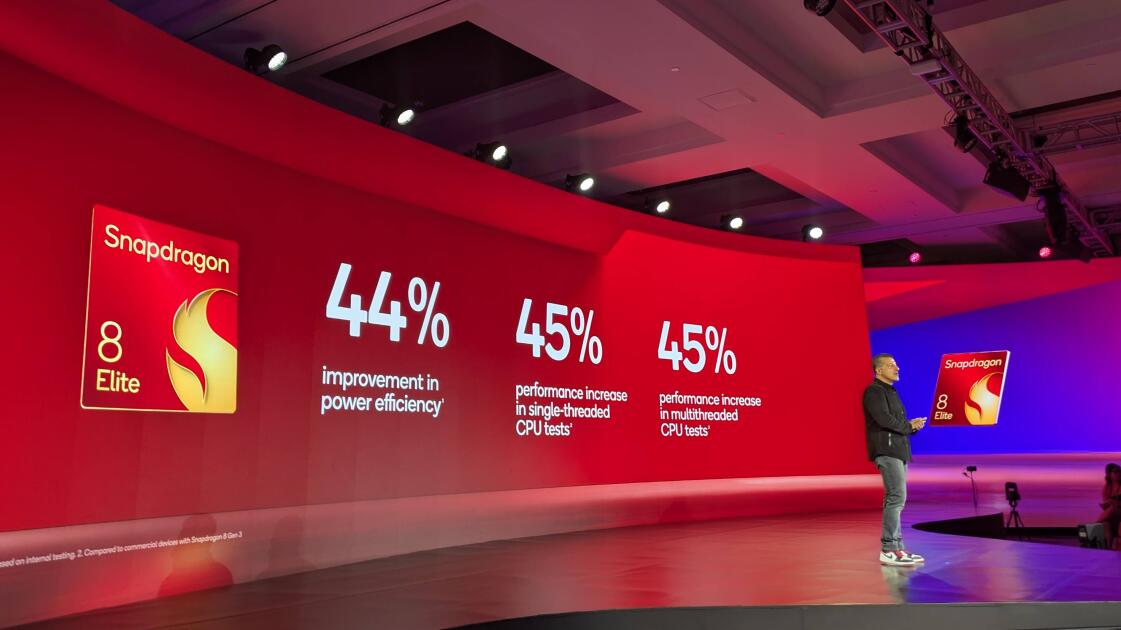WAILEA, Hawaii—While the main course of the 2.5-hour keynote that opened the Qualcomm Snapdragon Summit here Monday was an extended sales pitch for the Snapdragon 8 Elite mobile processor, it came with a side order of updates about Qualcomm’s efforts to pushed his Snapdragon. X chips laptops further into the mainstream Windows laptop.
Translation: Qualcomm and Microsoft are trying to brush aside concerns about apps or drivers not working on Qualcomm’s Arm-based processors. This has historically been a bug in Windows on Arm, even last year, and Intel highlighted this concern at the launch of its Lunar Lake laptop processors at IFA in September.
On Monday, executives from Qualcomm and Microsoft highlighted continued progress and called for some notable new steps.
“More and more developers are bringing their Windows apps to Snapdragon,” said Alex Katouzian, Qualcomm’s group general manager for mobile, computing and augmented reality. “Computer users spend 90% of their time-90% of the time— using apps that are already native to the Snapdragon X series.”
A popular application among 3D animators is now on that list: Blender. Nicole Qaqundah, Qualcomm’s head of global consumer channels, broke the news in her part of the keynote, adding that Qualcomm has joined the Dutch foundation that is helping to underwrite the development of that open-source application.
Microsoft’s Prism emulation has made tremendous progress in smoothing the experience of running applications written for Intel’s family of processors on Qualcomm’s chips, but it doesn’t touch device drivers. So the layer of Windows that people don’t usually think about until something breaks got extra attention at Qualcomm’s keynote.
Musicians, podcasters and other audio content creators may want to turn up the volume when playing Qualcomm’s flagship stream: Microsoft will soon ship a series of driver and software updates that should make it easier to connect instruments to computers.
“Microsoft has rewritten the MIDI set from the ground up,” said Katouzian, with this update to the MIDI 2.0 standard arriving first to members of the Microsoft Windows Insider program.
Microsoft, Qualcomm and Yamaha are also writing a new ASIO driver that will allow low-latency communications between a PC and an audio device. Katouzian’s function is: “Plug in your audio interface and it will just work.”
Recommended by our Editors
One video clip featured a guitarist shredding some chords through Steinberg’s Cubase 13 application through a series of tone presets.
Microsoft’s corporate vice president of Windows and devices, Pavan Davuluri, also appeared on stage to give his approval for Copilot+ PCs built on Qualcomm chips. He shared a quieter victory metric that he said Snapdragon has already met: “More than 90% of consumer printers, for example, just work seamlessly out of the box.”
DISCLOSURE: Qualcomm covered my airfare and accommodation, along with that of many invited attendees to the event.

 One cool thing: Copilot+ laptops with Snapdragon X Elite
One cool thing: Copilot+ laptops with Snapdragon X Elite
Get our best stories!
Register for What’s new now? to get our top stories delivered to your inbox every morning.
This newsletter may contain advertisements, deals or affiliate links. Subscribing to a newsletter indicates your consent to our Terms of Use and Privacy Policy. You can unsubscribe from newsletters at any time.
About Rob Pegoraro
contributor

